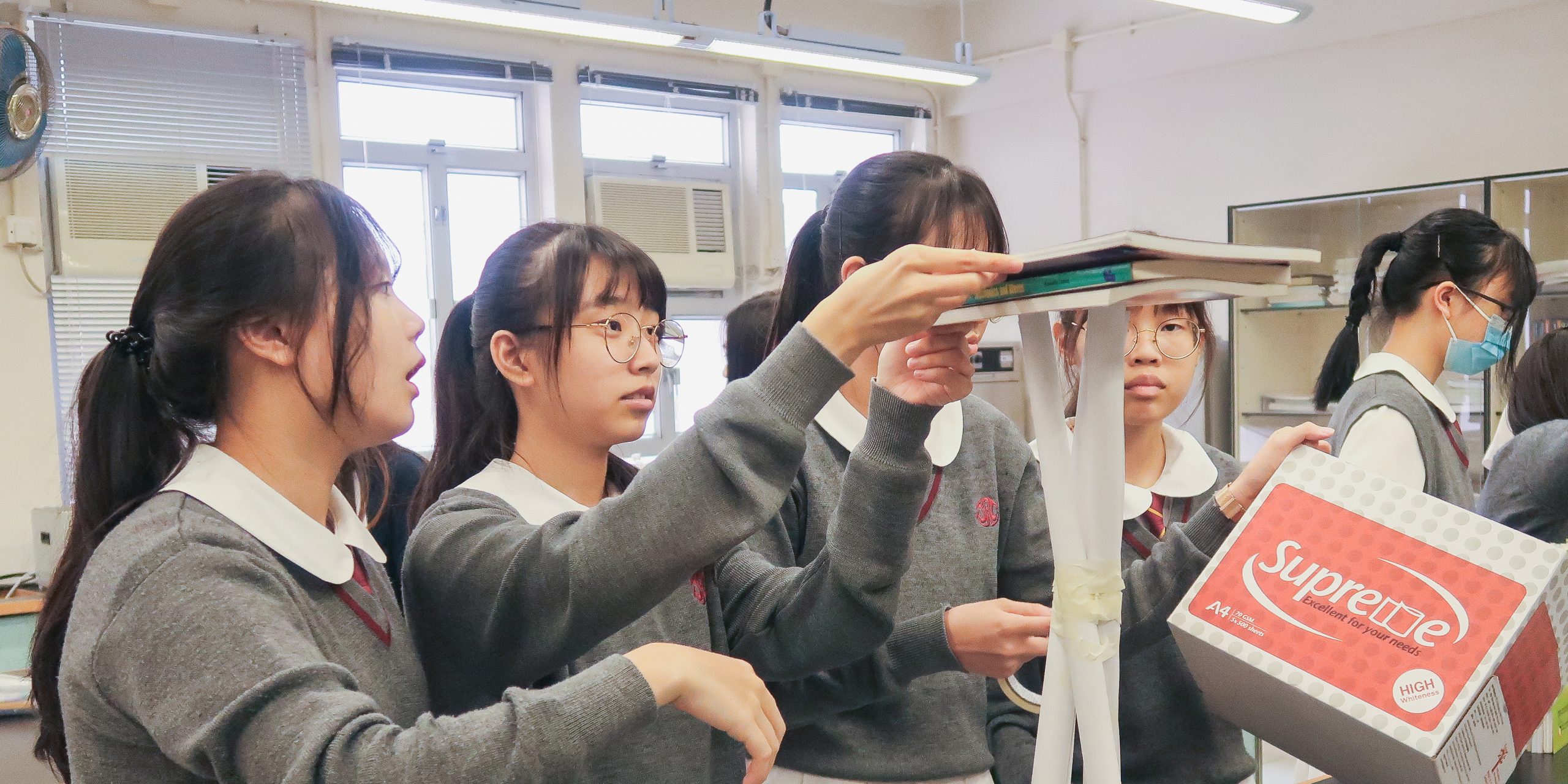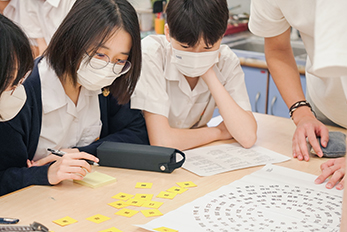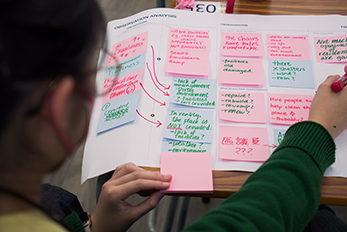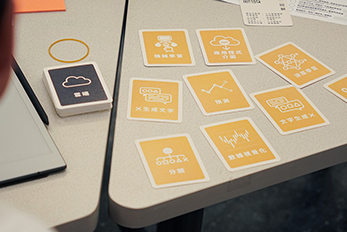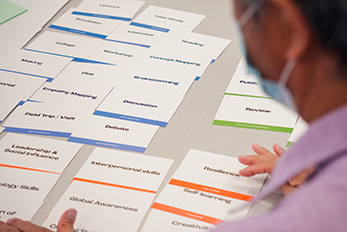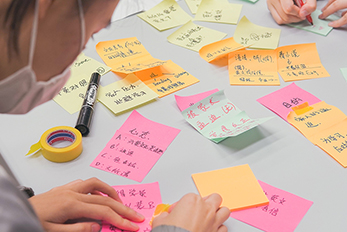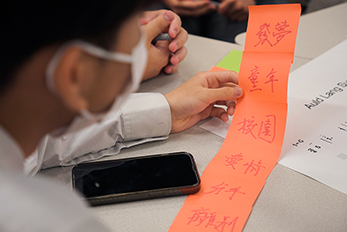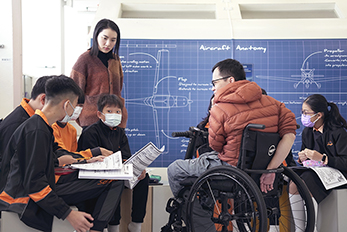WHAT is it?
This exercise takes students through the design process via a simple making game. They are asked to make prototype tools that are able to elevate books to a certain height through collaboration.
WHY teach it?
This session is designed for students to make various decisions according to specific goals/functions, and also to encourage them to think of different solutions. Students experience learning by exploring materials, evaluating ideas and practising design through making.
HOW to do it
▸ Introducing the challenge (15mins)
Students are asked to use the provided papers to make a tool to elevate a given number of books. The tools are judged by the following criteria, which are all communicated to the students in advance:
Basic points: 20 points
Elevate the books by 20 cm
Extra points: 5 points each
Extra 20 cm of elevation
Extra books
Movable*
Least paper used
Smallest base
Most iterations**
*The device is considered movable if it can be moved from the centre of the table to the edge (at least 25 cm); the team can suggest to the judge how to handle the tool when moving it.
**Only a design that uses a different mechanism (e.g., rolling, folding, hanging) is considered a new iteration.
Note that some of the criteria are absolute and some are comparative.
▸ Making (60mins)
Students are given 1 hour to make the paper tools.
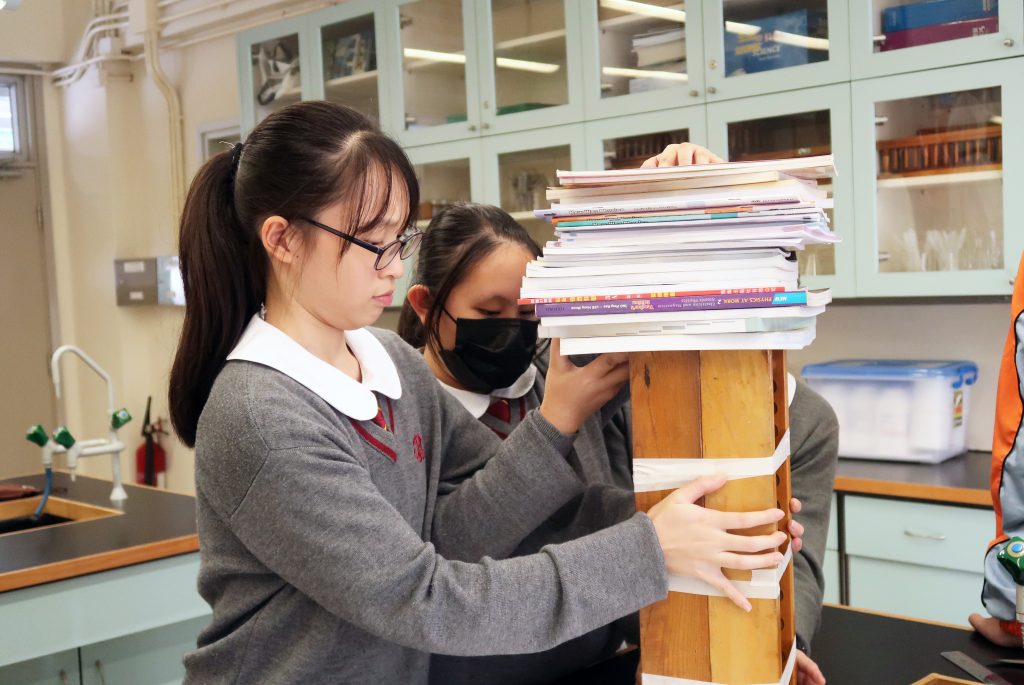
▸ Judging (25mins)
First, test the tools with the books (the books must stand for at least 5 seconds to be considered elevated).
Second, as it has a low risk of ruining the tools, compare the size/footprint of the tools.
Third, ask the design team for their preference of testing for movability or extra carrying capacity.
Fourth, put the tool on the scale to measure the minimal paper criterion.
The group with the highest score wins the challenge. In the event of a tie, multiple winners can be declared or there can be a ‘sudden death’ playoff in which books are added until the last tool standing is declared the winner.
▸ Debriefing and discussion (20mins)
Describe each of the tools in relation to design principles, highlighting their function (and interaction with the human [hand]) and form (vis-à-vis function).
Ask the students to reflect on how they made their decisions.
Teaching Tips
- Students will keep asking, ‘Is this ok?’ Continue to encourage them to explore different options by responding, ‘What is not stated as disallowed is allowed’.
- Some students may try to cheat; if so, let them be.
- The trick is in the word ‘elevate’; it does not have to be a paper tower.
- Although there is room to change the rules or judging criteria for different scenarios, try not to improvise too much. Extra judging criteria could also be put to a vote.




